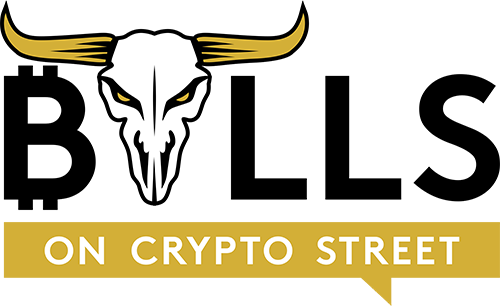The newer generation of blockchains is focused on solving the blockchain trilemma which involves the scalability element that Ethereum has been unable to effect. When Ethereum began its operations, transactions moved smoothly. Developers and users did not have to worry about scalability issues because gas fees were cheap, and transaction speed was fast. The activities on the network continued to expand, but the chain didn’t scale with it, leading to congestion. Now, Ethereum is highly congested, and different participants have to deal with high gas fees and slow transaction speed.
New chains like Near Protocol are designed to solve the scalability issue, allowing people to carry out transactions without paying gas fees that run into hundreds of dollars. It is a smart contract public blockchain that uses the Proof of Stake consensus mechanism. As a public network, developers are allowed to build their decentralized apps like decentralized finance protocols, NFT projects, DAOs, and much more. It is a competitor to Ethereum, and fancied by developers because of its infrastructure. Launching a smart contract on the platform is not as expensive as doing the same thing on Ethereum. The native token is NEAR, and it is the key to unlocking the functionalities on the network. Token holders can delegate their NEAR to validators, as a way of earning returns.
Near Protocol achieves scalability through sharding, which is a feature that Ethereum will possess once it fully migrates to ETH2.0, a Proof of Stake network. Near Protocol is designed to be user friendly, and one of the ways it achieves this is via the human-readable account names. For instance, on the Ethereum chain, before a person can send Ether to someone else, they need the wallet address of the recipient. This is usually a string of gibberish letters and numbers. In the Near network, people are given the option to create human-readable account names. Apart from the aforementioned, people are also allowed to interact with smart contracts and decentralized apps without using a wallet.
Some important DeFi and NFT projects are building on Near Protocol like Flux and Mintbase.
History of Near Protocol
Before Near was converted into a blockchain, it was a machine learning ecosystem created by Illia Polosukhin and Alexander Skidanov in 2017. The first purpose of the platform was to explore the automation of things from a human perspective, which is program synthesis. From that field, the founders decided to try out programmable smart contract functionalities in the last quarter of 2017. After understudying the existing solutions, the founders realized that there were some issues that needed to be solved. To do this, a team of engineers was employed and the process of creating NEAR Protocol started in August 2018. An underlying concept of this chain is to create an infrastructure for developers to seamlessly create their decentralized apps and scale them where necessary.
Near Protocol’s Architecture
Near uses a PoS consensus mechanism, which means users delegate their tokens to Validators, and the latter verifies transactions. Before anyone can be a Validator, they need to cross the threshold of tokens that they possess. Those that are unable to validate can decide to delegate their tokens to Validators or nodes in the network.
Near Protocol is highly scalable through the usage of Nightshade, a sharding solution. NEAR’s consensus mechanism is Nightshade. The transactions in every block are split into chunks, which are verified by nodes that maintain the shard’s state. This network functions effectively because of the following features.
Rainbow Bridge
Rainbow bridge is a cross chain bridge that links Near Protocol to Ethereum, allowing developers to move their smart contracts from one network to the other. People can also move their tokens between both networks. To do this, people need to lock their ETH in a smart contract, which then mints NEAR tokens. Users are allowed to reverse the transaction.
Aurora
Near is a layer 1 chain that hosts Aurora, a layer-2 protocol that permits developers to create their decentralized apps. With the help of the Rainbow Bridge, the apps created are also compatible with Ethereum. Smart contracts can be linked between Ethereum and Near Protocol because of the Ethereum Virtual Machine (EVM) and Rainbow Bridge.
How Near Protocol Solves Scalability
NEAR Protocol uses the sharding solution to solve scalability issues. Nodes are generally designed to verify transactions, and communicate with other nodes. As the activities on the network grow and the chain doesn’t scale, it could lead to congestion. This is what is happening on Ethereum 1.0, which uses the Proof of Work consensus mechanism. The sharding process reduces the computational load of users by dividing the chain into shards. This means that each node is not expected to verify every transaction that occurs in the network. Nodes in a shard only caters to those linked to them. In this structure, some validators are meant to verify chunks of transactions, and others produce the blocks that contain the chunks. The third set of nodes is meant to monitor the network and ensure that malicious behavior is spotted and handled.
NEAR Team
Near Protocol is overseen by a non-profit organization resident in Switzerland, NEAR Foundation. The Foundations duties are to maintain the protocol, develop it, enter into strategic partnerships with other leaders, and even raise funding for the ecosystem. Reference Maintainer is in charge of updating the Technical aspects of the NEAR Protocol.
NEAR Token
NEAR Token is the native token of this ecosystem, and it is used in paying gas fees, and accessing the functionalities on the ecosystem. When people stake their tokens, they are rewarded with NEAR. Validators are rewarded for their verification services. When a developer launches a smart contract, they gain a percent of the gas fees that the contract earns. The remaining part of the transaction fee will be burnt, ensuring that the native token is scarcer. Near also has a protocol treasury, where 0.5% of the total supply of the token is stored and utilized in developing the network.
If you want to learn how to trade the momentum of cryptos like NEAR, check out our Cryptostreet Trading Bootcamp.

Bulls on Crypto Street is a trading education website dedicated to digital assets such as Bitcoin, Ethereum, DeFi, NFTs, and other new advancements in the Metaverse.

